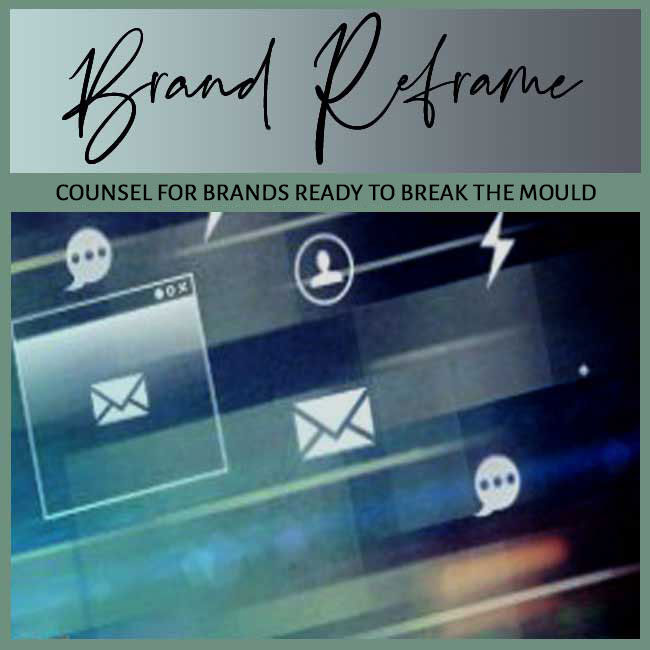
BY: SHOBHA PONNAPPA | BRAND BREAKTHROUGH STRATEGIST | 45 YEARS | 125+ CLIENTS
Brand engagement is the depth and quality of the relationship people choose to have with your brand … the feelings, behaviours, and rituals that go beyond purchase. It shows up in how often they interact, how willingly they participate, and how proudly they associate their identity with yours. Engagement isn’t clicks or views; it’s the ongoing exchange of attention and meaning that makes customers feel part of something they value. When engagement is strong, your brand becomes a living presence in their day, not a sporadic interruption.
I’ve found in my work as a Brand Breakthrough Strategist that engagement has a cumulative character. It is built through small, consistent moments that add up … acknowledgements, useful content, shared language, responsive service, and community spaces where customers see themselves. Engagement strengthens or weakens depending on how deliberately you design these moments … and how authentically you invite people into your brand’s world instead of broadcasting at them.
Attention has become cheaper to buy and harder to keep. Algorithms can deliver impressions, but only engagement earns loyalty. In a world of endless choice, customers don’t return to brands because of occasional entertainment; they return to brands that meet emotional needs, reward participation, and feel aligned with their self-image. Engagement converts awareness into attachment … the kind that sustains preference even when competitors shout louder.
In the past, distribution or budget advantages could compensate for lukewarm engagement. That’s no longer true. Communities decide what travels, what sticks, and what fades. Brands with strong engagement ride cultural waves, survive platform shifts, and gather advocates who sell on their behalf. Without it, marketing becomes a treadmill of cost … activity without compounding value.
Engagement grows when people feel they receive clear, ongoing value in return for their time and attention. That value may be practical (education, access, savings), emotional (belonging, recognition, inspiration), or social (status, contribution, connection). If the exchange is one-sided … you ask for attention but offer little in return … engagement stalls quickly.
The most effective brands make the exchange explicit and consistent. They set expectations (“follow us for weekly how-tos,” “members get early access”), then deliver reliably. Over time, this creates a rhythm of give-and-get that customers can trust. When people know what they gain by leaning in, they choose to stay close.
Engagement needs designed pathways … clear ways for people to act, respond, create, and contribute. Participation architecture turns passive audiences into active participants through formats like prompts, polls, challenges, co-creation, and user stories. It lowers the friction to take part and raises the satisfaction of being seen.
I encourage brands to map participation ladders: easy, low-effort actions at the bottom … deeper, higher-commitment actions at the top. When each step feels rewarding and recognised, customers naturally climb. Architecture prevents engagement from being accidental; it becomes an intentional system.
People engage longer and more deeply when they feel part of a group bound by shared values, language, and rituals. Community gives customers identity reinforcement … “people like me use brands like this.” It also creates peer-to-peer energy so the brand isn’t the only source of momentum.
Community doesn’t require massive scale; it requires intimacy and clarity. Smaller micro-communities (by interest, location, or use case) often outperform big generic groups. The brand’s role is host and facilitator … provide spaces, set norms, spotlight members, and let the community speak back into product and message.
Engagement thrives when customers can see their impact. Fast, human responses, visible product tweaks based on feedback, and transparent “you asked, we delivered” updates tell people their participation matters. Nothing builds apathy faster than a sense of shouting into the void.
Healthy feedback loops are multi-directional: the brand listens, responds, and reports back; the community talks to itself; and insights feed upstream into strategy, not just social content. When customers witness their fingerprints on the brand, they invest more of themselves.
For a new or relaunching brand, begin by defining the relationship you want … not just the message you’ll send. What actions should people take weekly or monthly? How will they benefit immediately and over time? Design your content, product touchpoints, and community spaces around those behaviours so engagement is built into the experience from day one.
Make early participation feel easy and rewarding. Welcome sequences, simple prompts, first-purchase rituals, and fast recognition establish the habit of interaction. If the first month with your brand is rich in value exchange and acknowledgement, the second month is easier … and the third becomes automatic.
Sustained engagement requires freshness without randomness. Keep your rituals stable … the recurring formats and moments people rely on … while introducing periodic novelty that renews interest. Rotate themes, invite guest perspectives, and evolve formats to reflect how your audience’s life is changing.
Most importantly, stay responsive. Treat engagement data as relationship signals, not vanity metrics. If a format tires, retire it gracefully. If a new prompt sparks energy, expand it. The brands that sustain engagement are those that iterate in public … letting customers feel part of the evolution rather than victims of abrupt change.
Mistaking posting for engaging is a frequent error. High volume without conversation trains audiences to ignore you. Another trap is over-automation … scaling replies and outreach to the point where everything feels templated. Efficiency that erases humanity costs more than it saves.
A third pitfall is engagement that’s exciting but unmoored from brand meaning … games and gimmicks that draw activity but don’t deepen attachment. These create spikes without loyalty. If participation doesn’t reinforce who you are and how you help, it dilutes focus and fatigues your audience.
A century-old tea label had active followers but shallow interaction. I reframed tastings as story circles … customers shared “tea moments” from their lives, and the brand curated the best into weekly spotlights. Engagement rose because people weren’t just sampling flavours … they were contributing identity-rich stories the brand celebrated.
This app’s daily active use lagged post-onboarding. I introduced 30-day savings challenges with peer squads, progress streaks, and coach messages responding to user wins. Participation architecture plus real human replies lifted daily engagement and referral rates, transforming users into advocates.
Rather than generic loyalty points, I encouraged this hotel to create arrival rituals (a local treat with a hand-written note), neighbourhood walks hosted by staff, and “guest of the week” features on social. Guests felt recognised and connected to place. Repeat stays grew because engagement lived beyond the booking.
Scepticism around “clean” claims dampened interaction. I helped the brand launch “Open Lab Fridays” … live Q&As with chemists, ingredient explainers, and customer-voted A/B tests on textures. Feedback loops made customers co-authors of product choices, and engagement shifted from doubts to dialogue.
Instead of chasing one big community, I advised the brand to nurture dozens of city-level micro-leagues for weekend athletes, offering kits, schedules, and highlight reels. Local belonging beat generic reach. Engagement soared because the brand enabled achievements among friends, not just content consumption.
Course completion was low, and forums were quiet. I added weekly “win walls,” mentor shout-outs, and cohort challenges with visible progress meters. Learners felt seen at every step, turning silent study into shared momentum. Completion and word-of-mouth both improved.
Awareness is “I’ve seen you.” Reach is “you appeared in my feed.” Engagement is “I choose to interact because this matters to me.” It’s measured in meaningful behaviours … replies, shares with commentary, participation in challenges, repeat visits, feature usage, community contributions … not just exposures.
Watch for faster scroll-by rates on once-reliable formats, fewer unsolicited mentions, declining repeat interactions from your core audience, and rising reliance on paid boosts to get any response. Often the earliest sign is quieter comment quality … fewer thoughtful replies, more generic emojis.
Yes. Small brands often outperform big ones because they can respond personally, spotlight individual customers, and host intimate communities. Thoughtful prompts, fast human replies, and consistent rituals beat expensive but impersonal campaigns.
Define engagement goals that reinforce your promise (teach, equip, connect, recognise). Choose formats that naturally express your personality and value. If a tactic drives activity but doesn’t deepen attachment or demonstrate usefulness, retire it … even if the numbers look flashy.
The best channel is where your audience already expresses identity and seeks peers. For some, that’s LinkedIn groups; for others, WhatsApp communities, Discord, or email circles. Depth beats breadth. It’s better to own one or two high-intimacy spaces than scatter light touches across many.
Build a stable base of rituals (recurring formats people rely on), layer in periodic novelty, and keep visible feedback loops so customers see their impact. Treat engagement as relationship design … not campaign design. When people feel known and needed, they return on their own.
Explore Brand Engagement Drop … Real Cases & Fixes
Case Studies
FAQ Insights

"One BIG IDEA can turn brand stagnation into unstoppable movement. Spots are limited each week ... book your breakthrough session now."
Shobha Ponnappa
My Definitive Guides to Other Critical Branding Concepts
Smart insights, real-world frameworks, and idea-driven clarity – designed to help brands move.
Get my fortnightly Brand Reframe newsletter. Smart insights, distilled thinking, and focused momentum to help your brand lead.

Get my free AI strategy guide. Smart prompts, sharper briefs, and practical ways to make AI support your brand momentum.

Just fill in the form to join. Get my newsletter and the guide shown alongside, all with several game-changing tips.